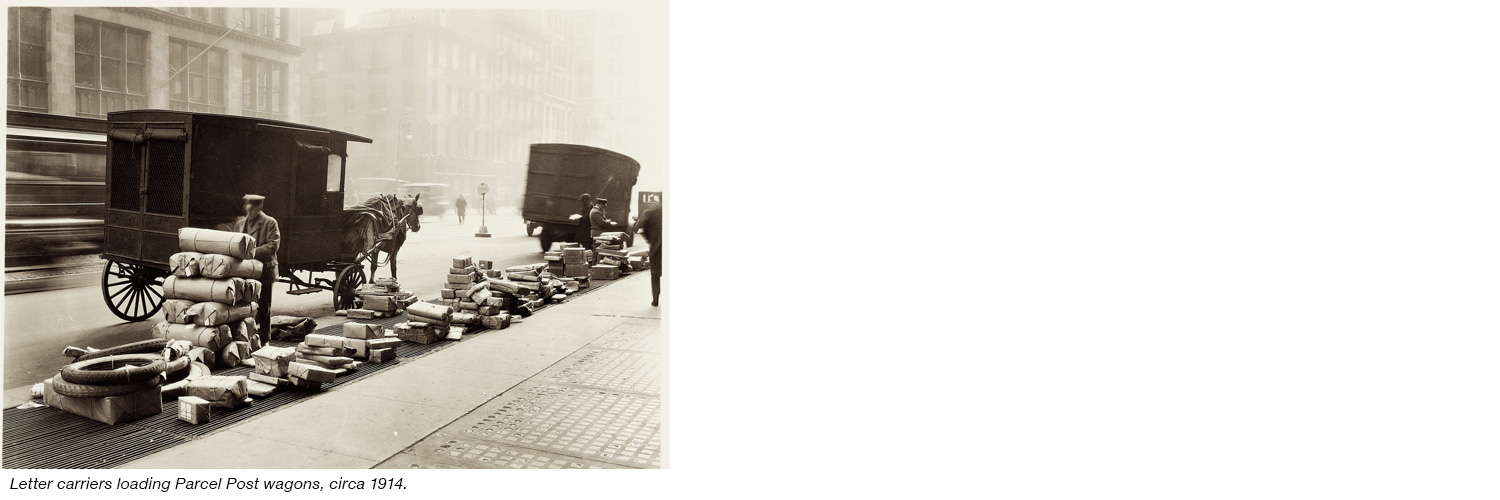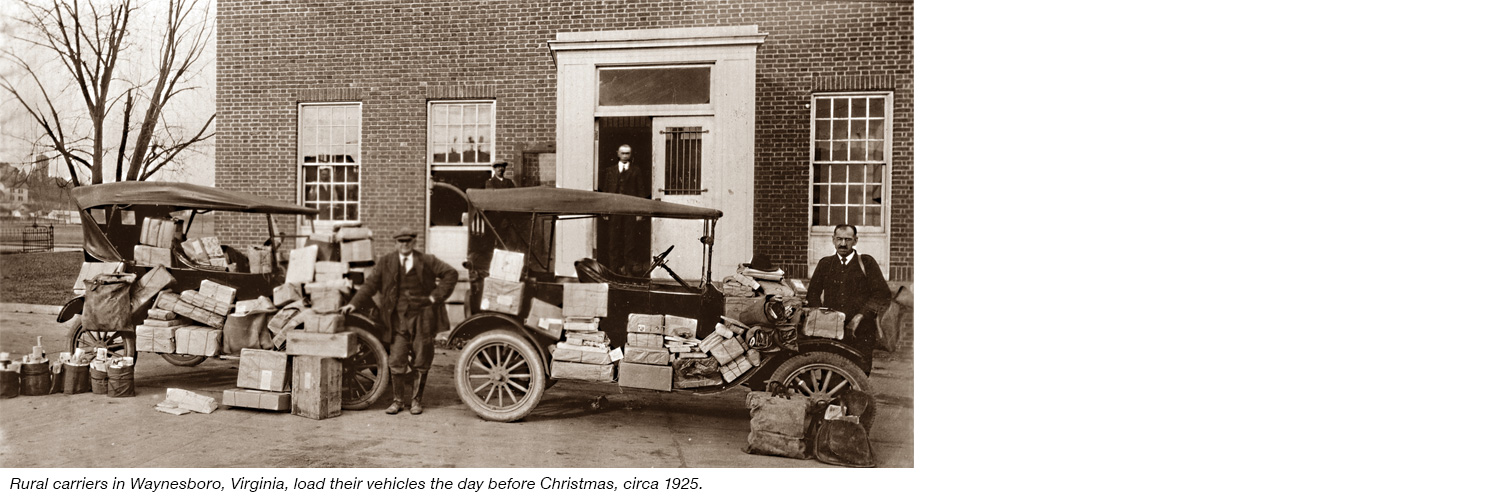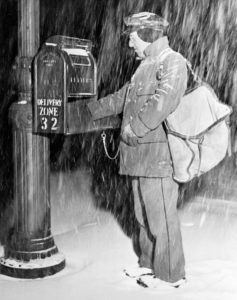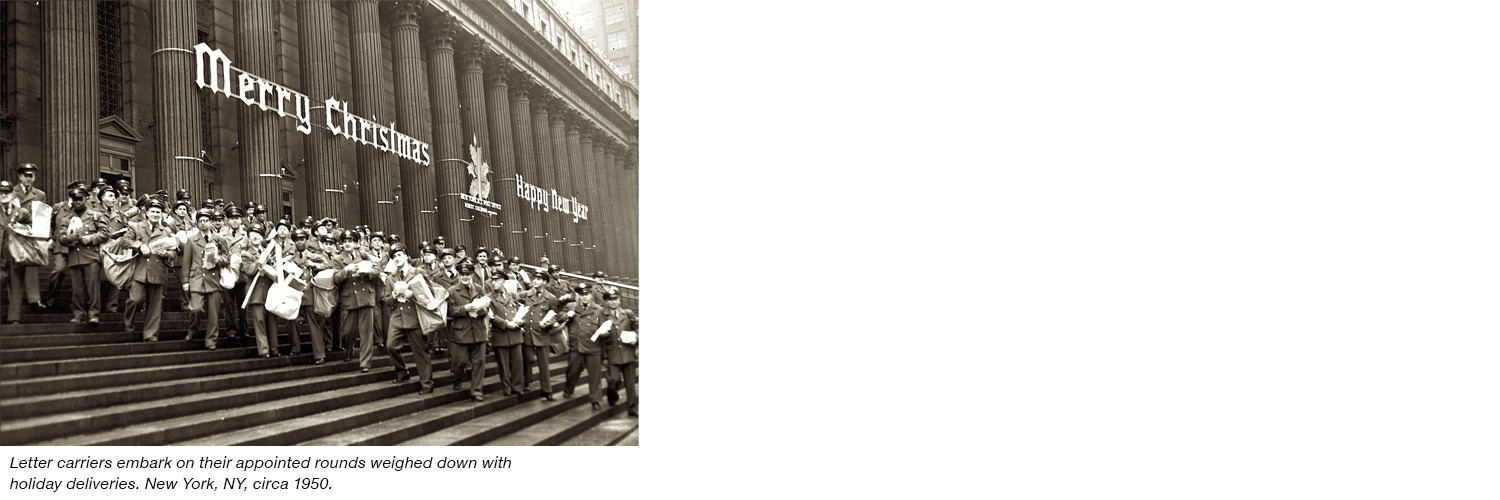
What a Rush
“Peak Season” is what the folks who work at the Postal Service call it — that surge of holiday mail during December. It is so much a part of American culture that you might assume it’s always been this way. A brief look at the history of holiday mail shows that this has not always been the case.
Before the Civil War, the sending of Christmas cards was practically unheard of. Paper, printing, and postage were all fairly expensive. It wasn’t until 1855 that senders of cards and letters were required to prepay postage. Before then, the recipients sometimes had to pay to receive their mail. By the time the first Christmas cards were printed in the United States in the 1870s, the cost of postage had dropped to the point that sending cards was more affordable.
Fueled by prosperity and a booming economy, the sending and receiving of cards grew in popularity in the late 1880s. News reports of a holiday mailing rush appeared by 1887. That year, The [Philadelphia] Times reported, “was the first time in the history of free delivery in this city that the letter carriers ever had to resort to push carts to deliver their mail.”
In the early 1900s the Post Office Department began planning for extra facilities, equipment, and personnel to cope with the holiday rush. The Department also began launching annual “Mail Early” campaigns, encouraging the public not to wait until the last minute to send their holiday mail.
The launch of Parcel Post service in 1913 added millions of packages to the holiday mail mix. Previously, only packages weighing 4 pounds or less were mailable; Parcel Post allowed the mailing of larger items. It was an instant success, with 300 million parcels mailed during the first six months. But with the influx of millions of packages, the “First Parcel Post Christmas” promised to stretch the Department to its limits. To prepare for the expected deluge, postal officials ordered new, larger railway mail cars and opened terminals in 82 cities, where parcels could be taken off the trains and sorted.
On December 14, 1913, the Washington, DC, Evening Star called Parcel Post the “New Ally of Santa Claus” and described how “Santa Claus is wearing a broader smile than usual this year. His whistle is merrier and he is hustling the elves and brownies around his great toy workshop in high spirits. So say agents who have been in consultation with him in Santa Claus Land.”
In 1917, the entry of the United States into World War I added a military dimension to the holiday rush. Second Assistant Postmaster General Otto Praeger wrote, “Recognizing the unusual significance of the coming Christmastide … the Post Office Department … has made special arrangements to effect timely delivery of all ‘Christmas’ parcels addressed to the American Expeditionary Force overseas.”
The 1918 Annual Report of the Postmaster General described the extraordinary efforts taken to achieve that goal: “Ninety [box] carloads of this Christmas mail were delivered to the headquarters of the various divisions on or before the morning of December 25, while four carloads from a transport belated by storm were completely delivered on the morning of December 27.”
During World War II, so many experienced postal workers were deployed overseas in the military that the Post Office Department was woefully short of manpower. To help inexperienced, temporary workers keep up with growing amounts of wartime mail, the Department introduced delivery “zone numbers” in the nation’s largest cities. Zone numbers were the forerunners of the ZIP Code.
The Post Office Department issued its first Christmas-themed postage stamps in 1962.
Since then, stamps featuring a wide array of religious and cultural celebrations, including Hanukkah (1996) and Kwanzaa (1997), have been issued.
In recent years, driven by online sales, parcel deliveries have continued to increase. During the 2019 peak season, the USPS expects to process 910 million packages, a 4.4 percent increase over last year. Times may have changed, but it still takes teamwork, dedication and planning to deliver a successful holiday mailing season — just like it did a hundred years ago.




